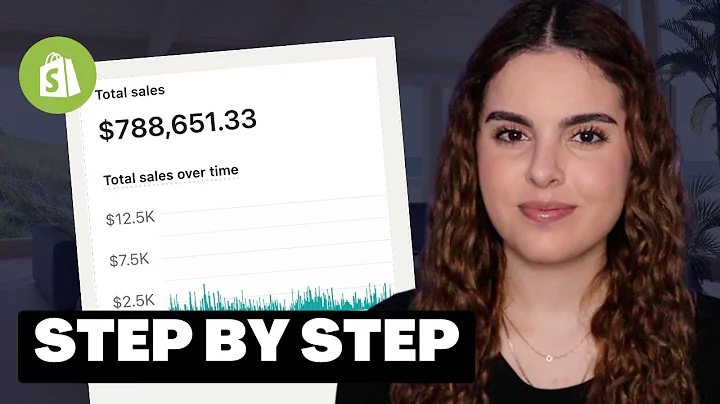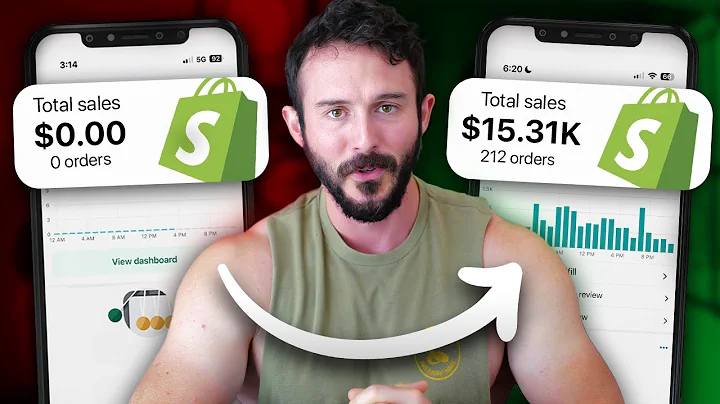Crafting Winning Digital Dropshipping Video Ads
Table of Contents
- Introduction
- Understanding the Digital Drop Shipping Business Model
- The Importance of Creating Winning Creatives
- Step 1: Choosing a Niche and Identifying the Ideal Customer
- Step 2: Understanding the Pain Points and Challenges
- Step 3: Introducing the Solution - Your Digital Product
- Step 4: Crafting an Effective Call-to-Action
- Example 1: Using Stock Footage and Text Bubbles
- Example 2: Creating User-Generated Content (UGC)
- Example 3: Using Props to Create Anonymous Ads
- Conclusion
- FAQs
Creating Winning Creatives for Digital Drop Shipping Products and Brands
In the realm of digital drop shipping, one of the most common challenges entrepreneurs face is creating winning creatives that effectively sell their products. Unlike traditional drop shipping, where physical products can be logically showcased, digital products require a different approach to capture the attention and interest of potential customers. In this article, we will explore a four-step framework for creating winning creatives for digital drop shipping products and brands. We will also provide real-life examples and tips to help you craft compelling and engaging content that drives sales and drives your business forward.
Introduction
Before diving into the details of creating winning creatives, it's important to understand the digital drop shipping business model. In this model, instead of selling physical products, entrepreneurs focus on selling digital products that provide solutions to real-life problems. These digital products can range from e-books, online courses, software, templates, and more. The key advantage of digital drop shipping is the ability to offer instant digital delivery, scalability, and higher profit margins compared to traditional dropshipping.
Understanding the Digital Drop Shipping Business Model
Digital drop shipping is a business model where entrepreneurs leverage technology and digital products to sell solutions to consumers' problems. Unlike physical drop shipping, where entrepreneurs need to manage inventory, fulfillment, and shipping, digital drop shipping allows entrepreneurs to focus solely on marketing, customer acquisition, and product creation. This business model is appealing to many entrepreneurs due to its low start-up costs, minimal risk, and potential for high-profit margins.
The Importance of Creating Winning Creatives
In the digital world, where attention spans are short and competition is fierce, creating winning creatives is crucial for success. Winning creatives are engaging, attention-grabbing, and effectively convey the value of your digital products. They serve as the first point of contact between your brand and potential customers, making it essential to create a strong first impression that sparks curiosity and interest. By creating winning creatives, you can differentiate your brand, build trust, and increase the chances of turning a viewer into a customer.
Step 1: Choosing a Niche and Identifying the Ideal Customer
Before diving into the creative process, it's vital to choose a niche and identify your ideal customer. Niche selection plays a crucial role in the success of your digital drop shipping business. By choosing a niche, you can narrow down your target audience and cater your marketing efforts to a specific group of people. To identify your ideal customer, consider factors such as demographics, interests, pain points, and purchasing power. This information will help you craft targeted creatives that resonate with your target audience.
Step 2: Understanding the Pain Points and Challenges
Once you have chosen a niche and identified your ideal customer, it's time to understand their pain points and challenges. Pain points are the underlying problems that your target audience faces, which your digital product aims to solve. By understanding these pain points, you can tailor your creatives to address them directly, making your potential customers feel seen and understood. Use market research, surveys, and customer feedback to identify the pain points and challenges your target audience experiences within your niche.
Step 3: Introducing the Solution - Your Digital Product
With a clear understanding of your target audience's pain points, you can now introduce your digital product as the solution. Highlight the unique features and benefits of your product that directly address the pain points of your audience. Use persuasive language, testimonials, and success stories to build trust and credibility. A key aspect of introducing the solution is framing it in a way that feels attainable and accessible to your target audience. Avoid overwhelming them with complex concepts or requirements. Instead, focus on simplicity and ease of use.
Step 4: Crafting an Effective Call-to-Action
The final step in creating winning creatives is crafting an effective call-to-action (CTA). The CTA prompts viewers to take the next step, whether it's visiting your website, making a purchase, or signing up for a free trial. It's important to make the CTA clear, concise, and compelling. Use action-oriented language and highlight the benefits of taking the desired action. For example, "Start your four-week plan today and transform your body" or "Click the link below to unlock the solution to your problem." A well-crafted CTA can significantly increase conversion rates and drive potential customers to take action.
Example 1: Using Stock Footage and Text Bubbles
One effective way to create winning creatives is by using stock footage and text bubbles. This style of creative is easy to replicate, even for those without video editing experience. Platforms like InVideo offer templates and stock footage that can be customized to fit your brand and product. The key to success with this style is to catch attention with an attention-grabbing thesis, address pain points, introduce the solution, and end with a compelling call-to-action. Use engaging visuals, captivating text, and a concise script to create a persuasive video that encourages viewers to take the desired action.
Example 2: Creating User-Generated Content (UGC)
Another approach to creating winning creatives is by leveraging user-generated content (UGC). UGC is content created by your customers or influencers who support your brand. By hiring someone who can relate to your target audience, you can create UGC that resonates with potential customers. This can be in the form of testimonials, before-and-after transformations, or personal stories. UGC adds authenticity and relatability to your creatives, making them more persuasive and trustworthy.
Example 3: Using Props to Create Anonymous Ads
For those who prefer not to show their face or hire influencers, using props can be an effective way to create anonymous ads. By creatively incorporating props related to your niche, you can grab attention and pique curiosity. For example, if your digital product is a weight loss solution, you can use everyday items to represent weight gain or discomfort. The key is to make the connection between the prop and the pain points of your target audience clear. By using props strategically, you can create intriguing creatives that generate interest and curiosity.
Conclusion
Creating winning creatives for your digital drop shipping products and brands is a crucial step in attracting and converting potential customers. By following the four-step framework outlined in this article and using real-life examples, you can craft compelling and persuasive content that resonates with your target audience. Remember to understand your niche, address pain points, introduce your product, and create a clear call-to-action. By continuously refining and testing your creatives, you can optimize your marketing efforts and drive the growth of your digital drop shipping business.
FAQs
Q: How can I choose the right niche for my digital drop shipping business?
A: Choosing the right niche for your digital drop shipping business requires thorough market research and understanding of your target audience. Consider factors such as competition, market demand, and your own expertise or passion. Conduct surveys, analyze trends, and identify gaps in the market to find a profitable niche that aligns with your interests and appeals to your target audience.
Q: How can I effectively address the pain points of my target audience in my creatives?
A: To effectively address the pain points of your target audience, conduct thorough research and understand their needs and desires. Use persuasive language, relatable stories, and testimonials to show how your digital product can solve their problems. Focus on empathy and understanding, making your potential customers feel seen and understood.
Q: Should I outsource the creation of user-generated content (UGC) for my creatives?
A: Outsourcing the creation of user-generated content (UGC) can be a cost-effective and efficient way to create engaging and relatable creatives. Hiring influencers or individuals who can relate to your target audience can bring authenticity and credibility to your marketing efforts. Be sure to provide clear guidelines and expectations to ensure the UGC aligns with your brand messaging and target audience.
Q: How can I optimize my call-to-action (CTA) to drive conversions?
A: To optimize your call-to-action (CTA) and drive conversions, make it clear, concise, and compelling. Use action-oriented language, highlight the benefits of taking the desired action, and provide a sense of urgency. Experiment with different CTAs and track their effectiveness through analytics to find the most impactful approach for your target audience.



















